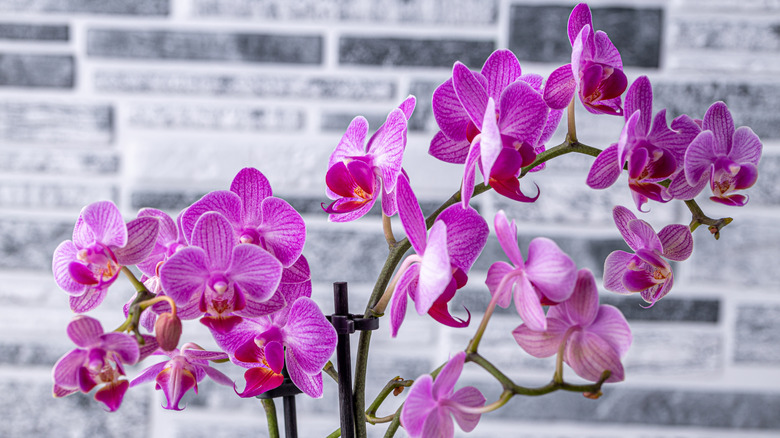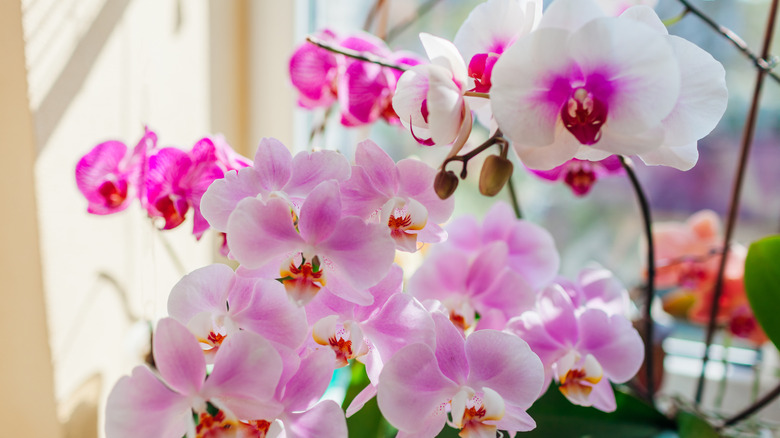The Simple Gravel Trick That Can Help Your Orchids Thrive
Orchids are beloved for their intricate, long-lasting blooms and exotic appeal, making them a popular choice for indoor gardeners. Despite their reputation for being finicky, orchids are not difficult to grow; they simply have different needs than most houseplants. Native to humid, tropical environments, many common orchid varieties, like the Moth orchid (Phalaenopsis Blume), are epiphytes that grow on trees in the wild, taking moisture from the air as well as from the soil. Indoors, recreating those natural conditions can be a challenge, especially when central heating and air conditioning create dry air. Most orchids purchased at greenhouses and big box stores are epiphytes. There are also terrestrial orchids that grow in the ground, but these are not as common for the home plant lover.
Caring for your orchids starts with meeting their light, temperature, and humidity needs. Most orchids prefer bright, indirect light, preferably in an east-facing window, daytime temperatures between 60 degrees at night, 75 to 85 degrees during the day, and high humidity levels around 50 to70%.That's where a simple trick comes in handy: the gravel tray. This easy, low-cost solution can boost humidity around your orchid without making its roots sit in water. By placing your orchid's pot on a saucer that sits in a shallow tray filled with water and pebbles, you create a humid microclimate that supports healthy growth and vibrant flowers. There are other ways to grow orchids that may work for your growing area, but the tray method works well and is easy to set up.
How to use a gravel tray to boost orchid health
With the average humidity rate in homes hovering around 30 to 40%, increasing humidity is a must for growing orchids. Proper humidity in the air in your growing area means your orchid will require less frequent waterings, especially during the winter months when the plant is at rest.It may seem like a lot of variables to consider to successfully care for indoor orchids, but it's simply a matter of recreating the environment that they thrive in, so you avoid common issues like root rot, wrinkling leaves, and lack of blooms.
It is important to raise the humidity in your home for the best environment for your orchids, and a pebble or gravel tray helps bridge that gap. Fill a shallow tray with small stones or gravel. Many orchid growers use aquarium gravel for this. Add water just below the top of the stones or gravel and set the orchid pot in a saucer on top of the gravel layer. This keeps the roots from sitting in water, which will cause root rot. As the water evaporates, it raises the humidity immediately around the plant without causing damage to the roots or inviting fungal problems. Using a pebble or gravel tray is more efficient than relying on misting. Misting will raise the humidity for a few minutes, but not enough to be the only source of constant humidity for the plant. A combination of both methods works best.

